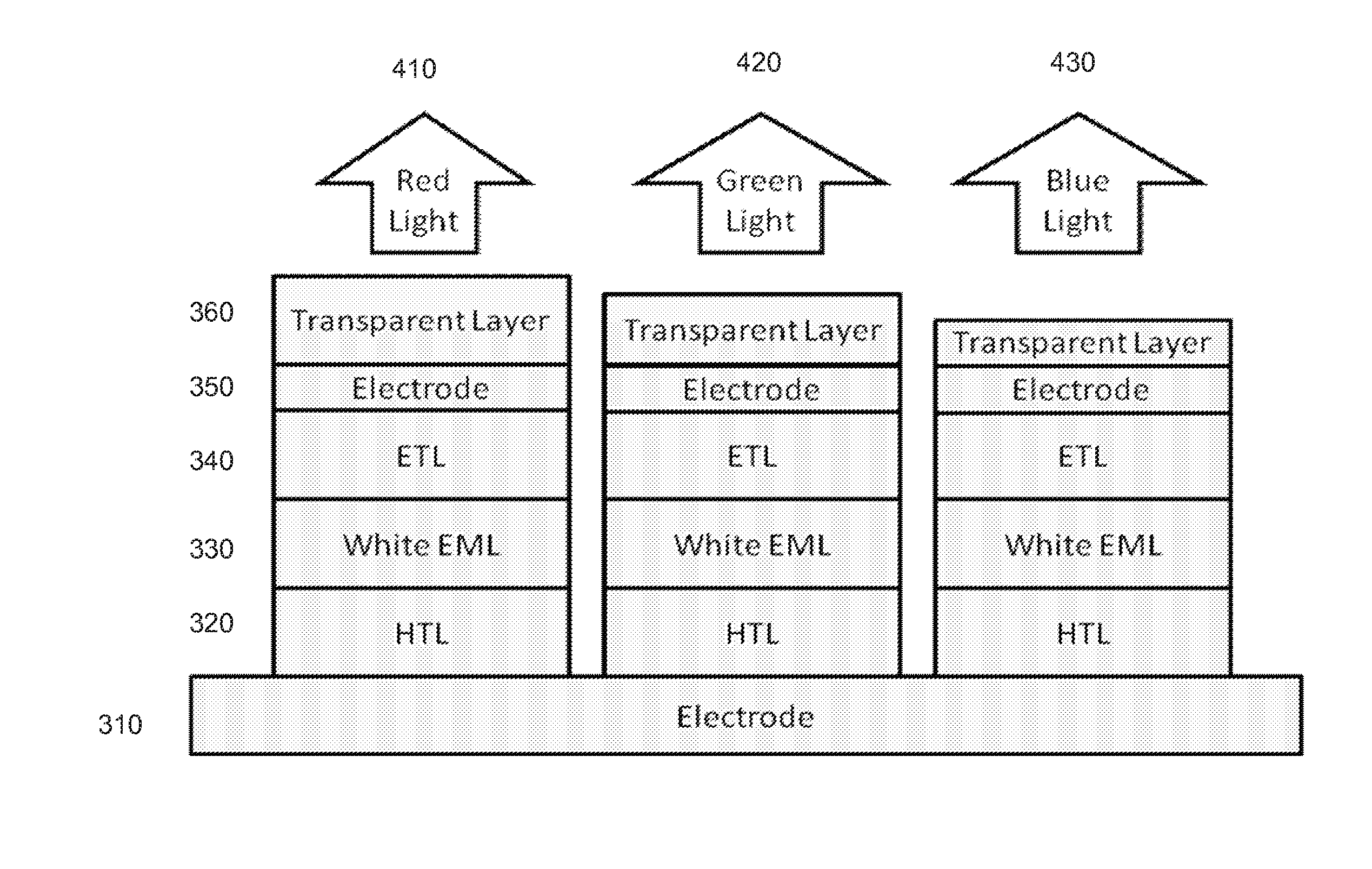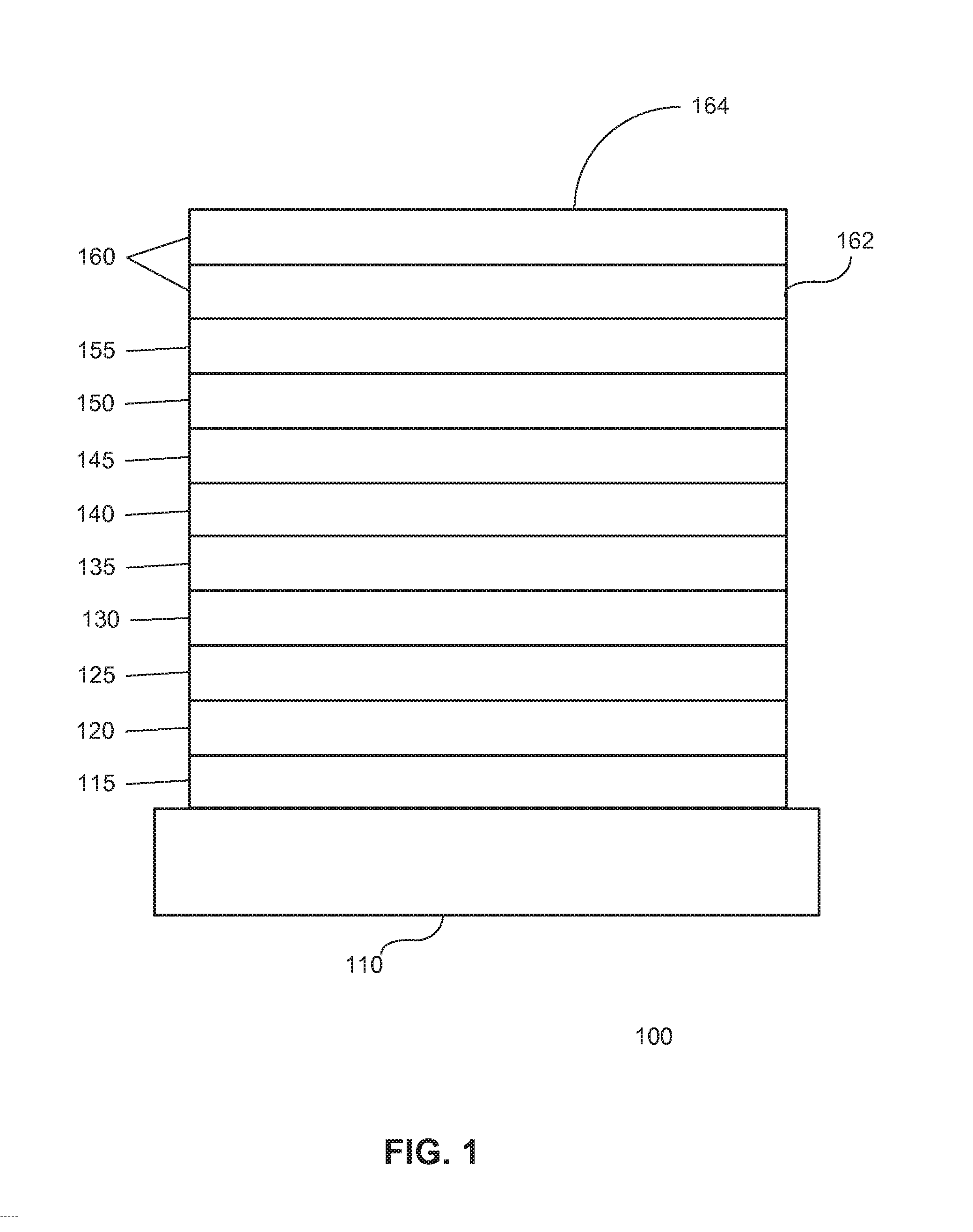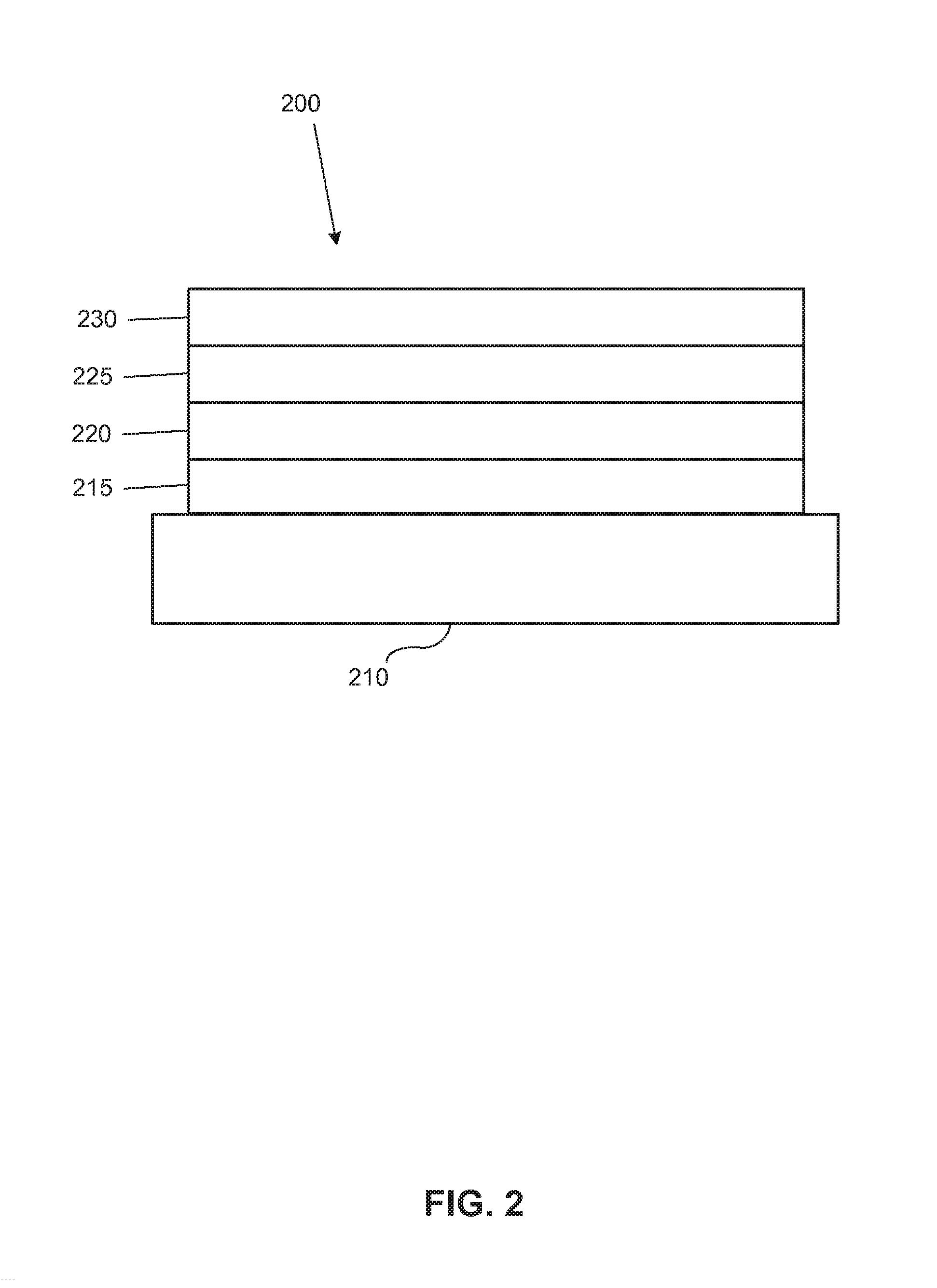Patterning method for oleds
a technology of oleds and patterns, applied in the direction of basic electric elements, electrical apparatus, semiconductor devices, etc., can solve the problems of broken processing windows, achieve ultra-rapid growth, rapid printing of large-scale electronics, and break the processing window
- Summary
- Abstract
- Description
- Claims
- Application Information
AI Technical Summary
Benefits of technology
Problems solved by technology
Method used
Image
Examples
first embodiment
[0099]A first embodiment is described with reference to FIG. 3: A substrate / first electrode 310 may be loaded into an OVJP chamber. An HTL 320 (and / or an HIL) may be deposited using OVJP so that a first thickness of HTL and / or HIL is deposited on a first set of sub-pixels 410. A second thickness of HIL and / or HTL may be deposited on a second set of sub-pixels 420. A third thickness of HIL and / or HTL may be deposited on a third set of sub-pixels 430. In this example, and the others that follow, the “first thickness,”“second thickness” and “third thickness” are to be understood as different thicknesses, i.e. including a difference that is intended, and is typically greater than the mere processing imperfections in deposited layers that are otherwise intended to be the same thickness. For example, the first thickness, second thickness and third thickness may include differences greater than approximately 5 Å, approximately 10 Å, or approximately 20 Å. The different thicknesses may alte...
second embodiment
[0104]A second embodiment is described with reference to FIG. 4: HIL and / or HTL 320 and EML 330 may all be deposited on sets of sub-pixels 410, 420, 430, conventionally using VTE and (optionally) shadow masks (the shadow mask being optionally used if different thicknesses and / or compositions are used for different sub-pixels). The substrate may be subsequently loaded into an OVJP chamber, and a first thickness of ETL 340 is deposited on a first set of subpixels 410 and a second thickness of ETL 340 is deposited on a second set of sub-pixels 420. A third thickness of ETL 340 may be deposited on a third set of sub-pixels 430.
[0105]A second electrode 350 may be deposited, for example, using conventional VTE.
third embodiment
[0106]A third embodiment is described with reference to FIG. 5. A first thickness of HIL and / or HTL 320 is deposited on a first set of sub-pixels 410 and a second thickness of HIL and / or HTL 320 is deposited on a second set of sub-pixels 420, e.g. using OVJP. A third thickness of HIL and / or HTL 320 may be deposited on a third set of sub-pixels 430, e.g. by OVJP.
[0107]An EML 330 may then be deposited, e.g. OVJP, or other techniques. Optionally, a different EML may be deposited on each set of sub-pixels 410, 420, 430, such as a Red EML, a Green EML and a Blue EML. Of note, the EML 330 in FIG. 5 may have the same or different thicknesses.
[0108]A first thickness of ETL 340 is deposited on the first set of sub-pixels 410, and a second thickness of ETL 340 is deposited on the second set of sub-pixels 420 also using OVJP. A third thickness of ETL 340 may be deposited on the third set of sub-pixels 430, e.g. by OVJP. Thus, the device shown in FIG. 5 may have multiple layers including differ...
PUM
 Login to View More
Login to View More Abstract
Description
Claims
Application Information
 Login to View More
Login to View More - R&D Engineer
- R&D Manager
- IP Professional
- Industry Leading Data Capabilities
- Powerful AI technology
- Patent DNA Extraction
Browse by: Latest US Patents, China's latest patents, Technical Efficacy Thesaurus, Application Domain, Technology Topic, Popular Technical Reports.
© 2024 PatSnap. All rights reserved.Legal|Privacy policy|Modern Slavery Act Transparency Statement|Sitemap|About US| Contact US: help@patsnap.com










